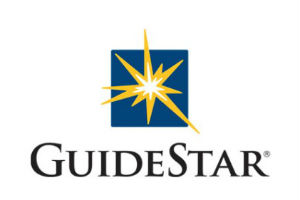“Making a better world takes a long time,” said Jacob Harold, president and CEO of GuideStar.org. The Williamsburg, Va., nonprofit hosted its second quarter conference call yesterday, reviewing financial and other data but Harold emphasized that its aims was not to reinforce “short-term-isms” with the effort in transparency.
“What we’re trying to do is provide systematic, regular updates toward steps we’re taking for our long-term future,” he said. “Quarterly calls have contributed at times a ‘short-term-ism’ on Wall Street. We want to move in the opposite direction: clear, short-term steps we’re taking toward long-term goal.”
At the height of yesterday’s call there were 215 participants. GuideStar, which digitizes and compiles annual tax forms and other data of nonprofits, hosted more than 480 participants during its first quarterly call in February. The next impact call is scheduled for 2 p.m. (est) on Aug. 11.
Harold reviewed GuideStar’s 2020 strategic plan and quarterly programmatic and operational results and Chief Financial Officer James Lum reviewed quarterly financial results before questions were entertained.
Comparing a snapshot of staff in 2014 with identified “tentative needs” in 2016, GuideStar expects to increase staff, which is its largest cost.
Harold described the evolution of GuideStar’s Organizational Dashboard, which was streamlined with fewer metrics and clearer targets, creating a better tool for management. The aim was to “thoughtfully aggregate different numbers of the work we do,” rather than overwhelm themselves with numbers.
There was 11.3 percent growth quarter over quarter in total participation by nonprofits in GuideStar Exchange, and 57 percent year over year. The biggest growth was among Gold level participants, at almost 40 percent since the fourth quarter, with 2,857 participants.
“We’re close to that magical 100,000 mark,” Harold said, at more than 96,000 total participants, up from 85,574 in the previous quarter. “Growth like that could get us to our goal of 200,000 by the end of 2016.
GuideStar continues to have about 50,000 additional registered users going to the site, which was down only slightly year over year, about 0.5 percent. Harold described that as “just a natural variance,” and not “any signal in that noise but something we will have to keep our eye on going forward.”
What’s likely the most important number in the long-term is API hits, which grew almost 40 percent. API hits track what other sites use and link to GuideStar’s data and information. “APIs are a lighter weight, faster way of creating and sharing information,” Harold said.
“One of most tricky challenges as organization, how do we have 3,000 to 4,000 organizations and individuals help subsidize the other seven million users who use GuideStar for free,” Harold said.
Lum presented preliminary and unaudited financials, which showed revenue of $11.15 million in 2013 and expenses of $10.232 million, creating cash flow of about $849,000, the second straight year it was on the positive side.
Products revenue was up about $100,000 year over year, to about $2.4 million, Lum said, and another $1 million in grants was received last year, compared with only $50,000 this year. “That’s really a factor of timing,” he said. “Our baseline business, products membership, pretty much remained steady.” The second quarter is traditional stronger for GuideStar in terms of product sales.
“Timing is everything when comes to transparency,” Lum said. GuideStar plans to file its 2013 Form 990 on May 15 and already reported year-end results three months ago. The Internal Revenue Service (IRS) form is “not sufficient, without transparency and timeliness,” Lum said. Anecdotally, nonprofits filed their tax forms seven months after their fiscal year ended, on average, according to a small set of random samples that GuideStar reviewed. In discussions with their auditors, he said their auditors found about three out of four charities they worked with filed an extension.
